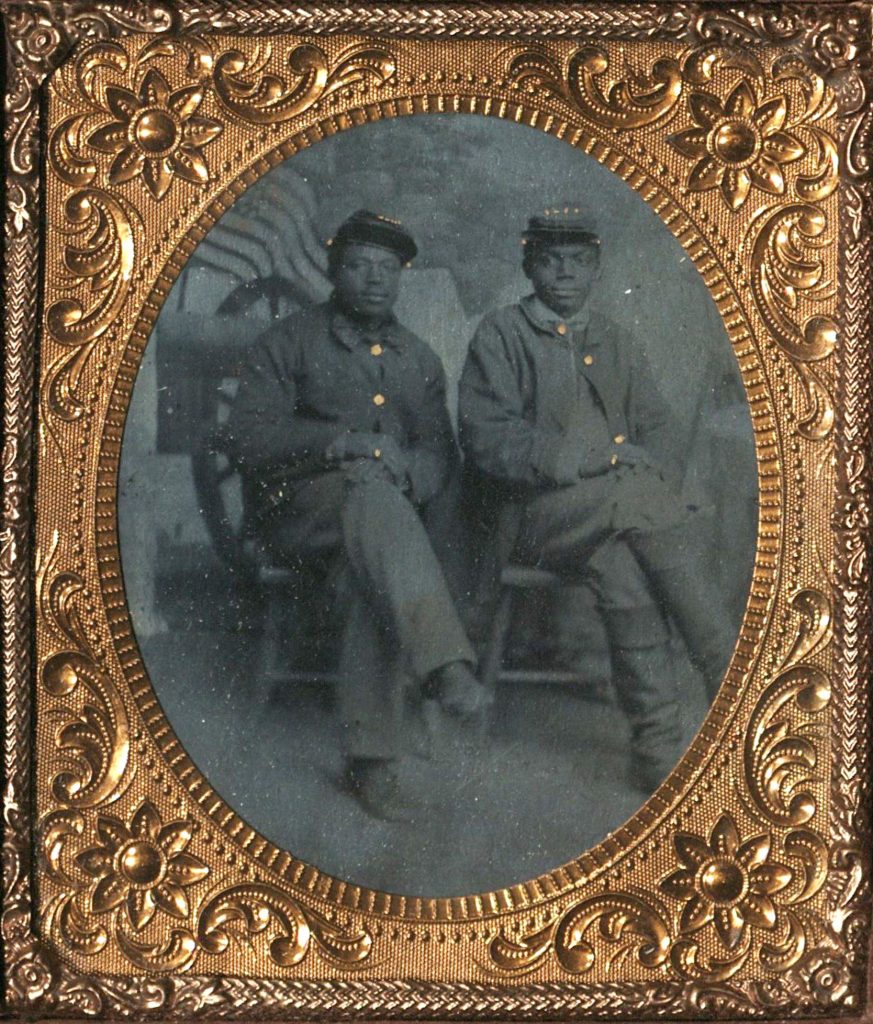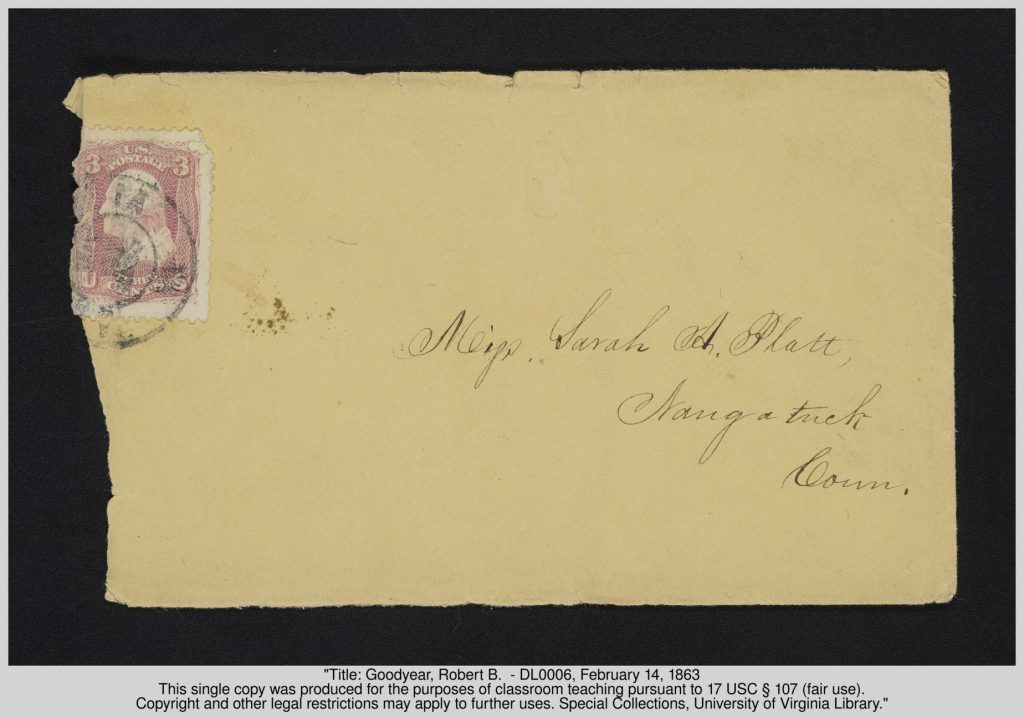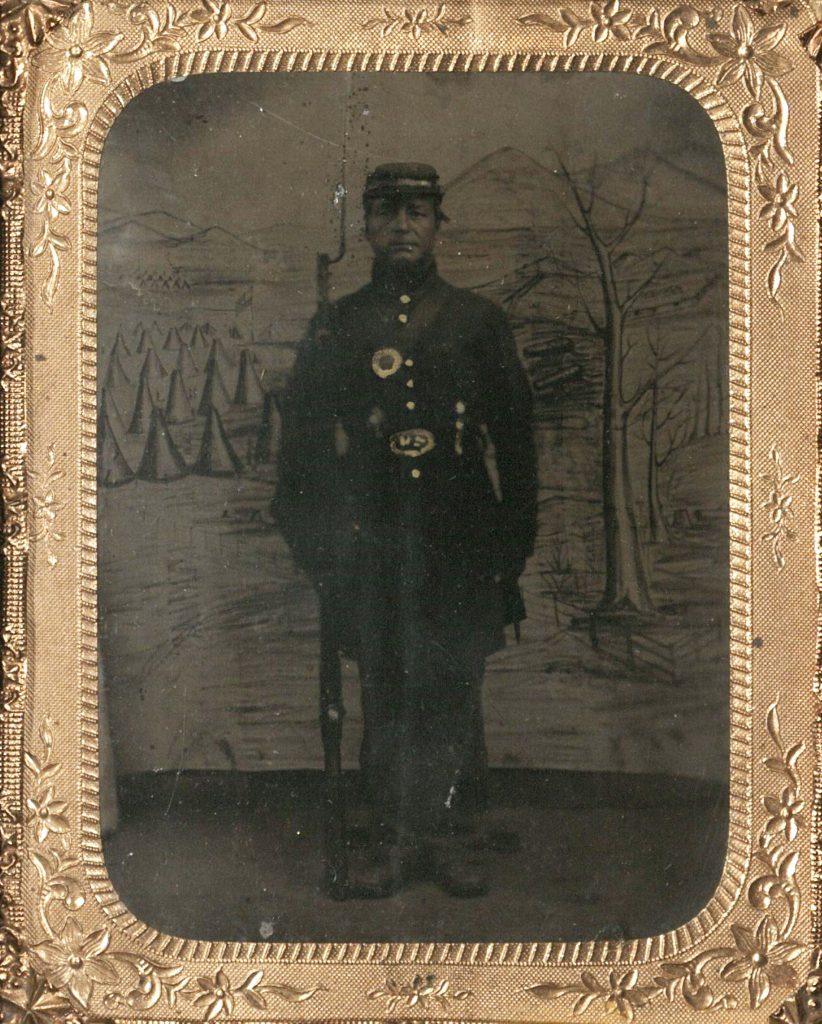This post is by Elizabeth Nosari, Project Processing Archivist at the Albert and Shirley Small Special Collections Library, who is currently working with the William Faulkner Collection. In her previous role, she served as the Nau Project Archivist for the John L. Nau III Civil War History Collection.

Tintype double portrait of two unknown soldiers, ca. 1861–1865. John L. Nau III Civil War History Collection, MSS 16459, box 166, tray 1, PT0321, Albert and Shirley Small Special Collections Library, University of Virginia.
Lesson plans for the John L. Nau III Civil War History Collection are now available to view and download directly from the collection’s finding aid, under the “External Documents” heading at the bottom of the page. The two lesson plans—Analyzing Civil War-Era Correspondence and Analyzing Civil War-Era Portrait Photographs—engage students with the two most significant record types in the Nau collection in terms of scope. These two mediums also speak to one of the greatest strengths of Mr. Nau’s collection: the documentation of personal, lived experiences during the United States Civil War, 1861–1865.

Goodyear, Robert B., February 14, 1863. John L. Nau III Civil War History Collection, MSS 16459, box 43, folder 31, DL0006, Albert and Shirley Small Special Collections Library, University of Virginia.
The Nau collection letters, found in Series 1 and written by white men as well as white women, connected men away fighting to loved ones and business associates at the home front; letters reflect their role as wartime lifeline and contain exchanges of everyday news about families, friends, and finances. Letters also offer firsthand accounts of camp life, hospital conditions, battlefield experiences, and political views. The portrait photographs in Series 2—in early photograph formats, including daguerreotype, ambrotype, tintype, and carte de visite—visually capture and document their mid-nineteenth-century subjects, including their wartime roles as evidenced in uniforms, insignia, and weaponry. Digital facsimiles pulled from Series 1 and 2 of the collection are an important part of the lesson plans and encompass a selection of letters written by white men and women as well as portraits of soldiers, including white men, Black men, a Native American man, and a white woman.

Tintype portrait of Frederick L. Rainbow, ca. 1861–1865. John L. Nau III Civil War History Collection, MSS 16459, box 157, tray 2, PT0424.0001, Albert and Shirley Small Special Collections Library, University of Virginia.
The lesson plans engage with letters and photographs from the Nau collection as artifacts of history and material culture that served real and practical functions in the context of war. The reading materials and activities are designed for students to learn about the technologies that made letter writing and portrait photography possible on a mass scale in the mid-nineteenth century as well as their democratizing influences. As both practices increased in popularity over the course of the Civil War, literacy rates rose and a new, larger swath of American society was able to read and write. Portrait photography, which proliferated in part due to its convenience and affordability, allowed Americans across the social strata of the country to participate in portraiture for the first time. Mid-nineteenth century people could readily and self-consciously construct, capture, and memorialize their identities. They could also share their likenesses with friends and loved ones and mail these mementos back to the home front.
The Nau collection lesson plans invite students to read about Civil War-era letter writing and photographic portrait making, look at and analyze real-world examples, and create their own letters and portraits. Designed for grades 9 and up as well as grades K–8, they allow instructors to pick and choose which materials and activities best suit their students’ learning objectives.
Access the lesson plans and explore the John L. Nau III Civil War History Collection here.

